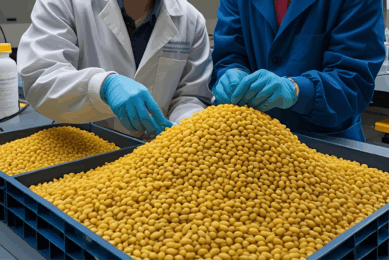Various factors putting pressure on soy prices

International prices for soybeans are under pressure. The International Grain Council (IGC) price index, a benchmark for the price of soybeans in the world, stood at 259 points on Monday, September 25 (year 2000 = index 100). That is 15% lower than the price index was a year ago.
The price for soy fell on the market in the first period of September due to the depreciation of the US dollar against the Brazilian real. That made Brazilian soy more expensive to sell on the world market. Demand from abroad therefore decreased.
Brazilian soy growers optimistic
Brazilian soy growers are optimistic about this season. It is on the dry side, which may delay the sowing work they are currently doing. There are also concerns about the influence of El Niño in the longer term. The drought that this weather phenomenon entails can cause disappointing yields in a large part of Brazil.
For the time being, the US Department of Agriculture (USDA) expects a Brazilian soy yield of 163 million tons. For comparison: in the 2022-23 season the country produced 156 million tons. The Brazilian agricultural agency Conab assumes 162.4 million tons of soy for the 2023-’24 season. In Argentina, a yield of 48 million tons is expected due to favourable weather. In the 2022-’23 season, 20 million tons of soybeans came from the country.
Americans expect poor soy harvest
Harvest is currently taking place in the United States. Early this week, the international price for soybeans rose slightly, as rainfall slightly slowed the that US harvest. American growers expect the worst harvest in 10 years. The latest crop figures show that around September 24, 50% of the soybeans were in ‘good to excellent’ condition. A week earlier this was still 52% and a year earlier around the same reference date, 55% of the soybeans were in ‘good to excellent’ condition.











